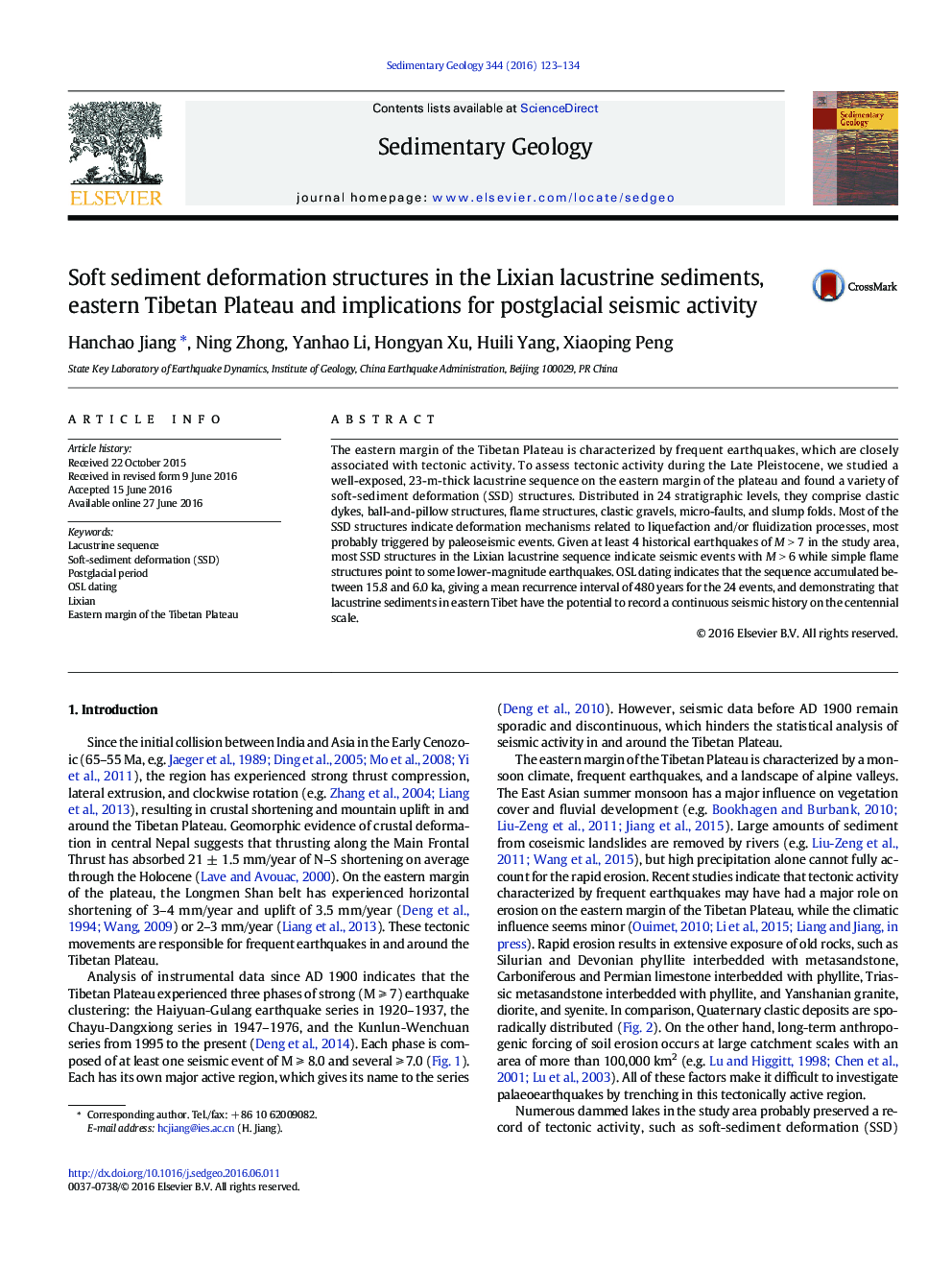| کد مقاله | کد نشریه | سال انتشار | مقاله انگلیسی | نسخه تمام متن |
|---|---|---|---|---|
| 4688953 | 1636019 | 2016 | 12 صفحه PDF | دانلود رایگان |
The eastern margin of the Tibetan Plateau is characterized by frequent earthquakes, which are closely associated with tectonic activity. To assess tectonic activity during the Late Pleistocene, we studied a well-exposed, 23-m-thick lacustrine sequence on the eastern margin of the plateau and found a variety of soft-sediment deformation (SSD) structures. Distributed in 24 stratigraphic levels, they comprise clastic dykes, ball-and-pillow structures, flame structures, clastic gravels, micro-faults, and slump folds. Most of the SSD structures indicate deformation mechanisms related to liquefaction and/or fluidization processes, most probably triggered by paleoseismic events. Given at least 4 historical earthquakes of M > 7 in the study area, most SSD structures in the Lixian lacustrine sequence indicate seismic events with M > 6 while simple flame structures point to some lower-magnitude earthquakes. OSL dating indicates that the sequence accumulated between 15.8 and 6.0 ka, giving a mean recurrence interval of 480 years for the 24 events, and demonstrating that lacustrine sediments in eastern Tibet have the potential to record a continuous seismic history on the centennial scale.
Journal: Sedimentary Geology - Volume 344, October 2016, Pages 123–134
